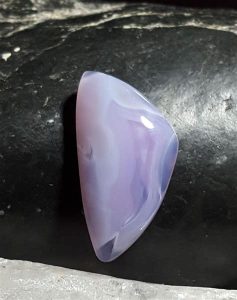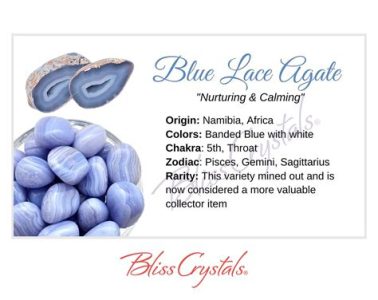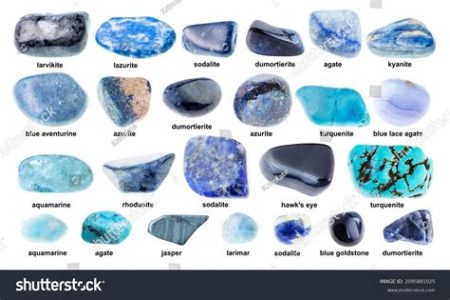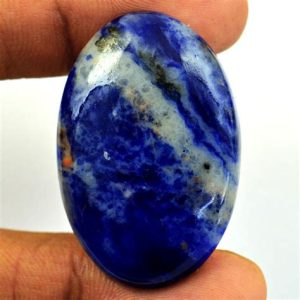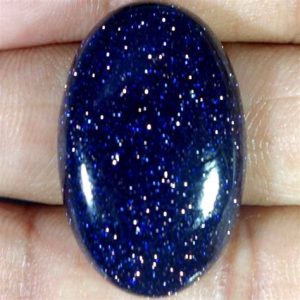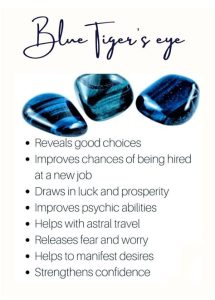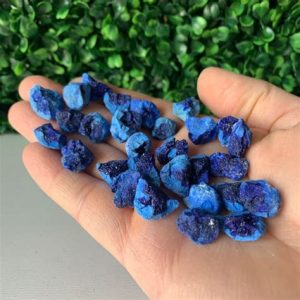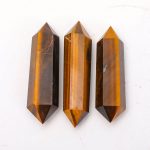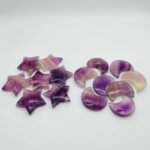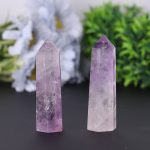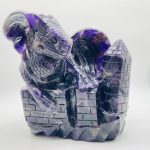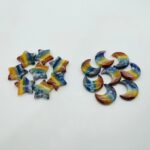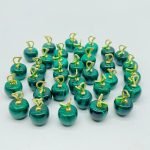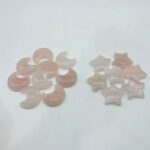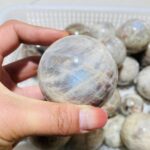Introduction

Crystals, with their intricate structures and diverse appearances, captivate the hearts of collectors and enthusiasts alike. Recognizing and identifying crystals is an essential skill for anyone seeking to understand their properties and unravel their potential. This comprehensive guide will equip you with the knowledge and techniques to confidently discern different types of crystals.
Visual Characteristics
- Shape and Symmetry: Crystals exhibit distinct shapes and symmetries due to their internal atomic arrangement. Observe the shape, whether it’s cubic, hexagonal, or any other symmetrical form.
- Color: The color of a crystal can provide clues about its chemical composition. However, some crystals display color variations due to impurities or inclusions.
- Cleavage and Fracture: Cleavage refers to the tendency of crystals to break along specific planes, resulting in smooth, flat surfaces. Fracture, on the other hand, occurs irregularly.
- Transparency and Luster: Transparency measures the amount of light that passes through a crystal. Luster describes the way a crystal reflects light.
- Fluorescence: Certain crystals emit visible light when exposed to ultraviolet radiation, a phenomenon known as fluorescence. This property can aid in identification.
Physical Properties
- Hardness: The Mohs scale of mineral hardness, ranging from 1 (talc) to 10 (diamond), indicates the resistance of a crystal to scratching.
- Density: The density of a crystal is its mass per unit volume. Heavier crystals typically contain elements with high atomic numbers.
- Electrical Conductivity: Crystals can exhibit varying electrical conductivity, from excellent conductors to poor insulators.
- Magnetic Properties: Some crystals exhibit magnetic properties, such as ferromagnetism or diamagnetism, due to the presence of unpaired electrons.
Optical Properties
- Refractive Index: The refractive index measures the speed at which light travels through a crystal compared to its speed in vacuum.
- Birefringence: Certain crystals exhibit birefringence, which means they split light into two rays with different polarizations.
Chemical Analysis
- Spectroscopy: Techniques such as X-ray diffraction and Raman spectroscopy can analyze the elemental composition and crystalline structure of crystals.
- Chemical Tests: Specific chemical tests can help identify crystals based on their chemical reactivity, such as the flame test for alkali metals.
Comparative Analysis
| Characteristic | Quartz | Calcite | Gypsum |
|---|---|---|---|
| Shape | Hexagonal | Rhombohedral | Monoclinic |
| Color | Transparent to white | Colorless to milky | Transparent to white |
| Hardness | 7 | 3 | 2 |
| Density | 2.65 g/cm³ | 2.71 g/cm³ | 2.32 g/cm³ |
| Electrical Conductivity | Poor | Poor | Poor |
Tips and Tricks
- Use a magnifying glass to examine fine details.
- Consult online databases and reference books for comparative analysis.
- Consider using a spectrometer or other analytical tool for chemical identification.
- Practice your observation skills by examining various crystals.
- Seek guidance from experienced collectors or experts.
Common Mistakes to Avoid
- Relying solely on visual characteristics can be misleading.
- Ignoring chemical analysis can lead to incorrect identification.
- Overlooking specific properties that can differentiate crystals.
- Assuming that all crystals of the same type will look identical.
Why Recognizing Crystals Matters
- Identification enables informed use and application.
- Understanding properties helps predict crystal behavior.
- Preservation efforts rely on accurate identification.
- Research and development require precise knowledge of crystals.
Benefits of Recognizing Crystals
- Enhanced appreciation of the natural world.
- Improved understanding of geological processes.
- Potential for new discoveries and applications.
- Connection with ancient cultures and symbolism.
Reviews
“This comprehensive guide provides a wealth of knowledge and practical tips for crystal recognition.” – Dr. Emily Carter, Geologist
“Essential for anyone interested in crystals, from collectors to scientists.” – Professor Mark Smith, Chemist
“A valuable resource that empowers readers to confidently identify this fascinating class of materials.” – John Hayes, Crystal Enthusiast
“Highly recommended for anyone seeking a deep understanding of crystals.” – Sarah Jones, Gemologist
Future Trends and Improvement
- Advancements in analytical techniques will continue to improve crystal identification accuracy.
- Crystalline engineering is a promising field that aims to design and synthesize new crystal materials with tailored properties.
- The discovery of novel crystal applications will enhance their use in various industries.
Conclusion
Recognizing crystals is a multifaceted endeavor that requires a combination of observation, analysis, and comparative study. By mastering the techniques outlined in this guide, you can confidently embark on a journey of crystal exploration and unlock their hidden potential. As the field of crystallography continues to evolve, future discoveries and applications await those who possess the knowledge and passion to embrace the wonders of these exquisite natural treasures.

